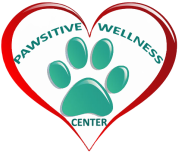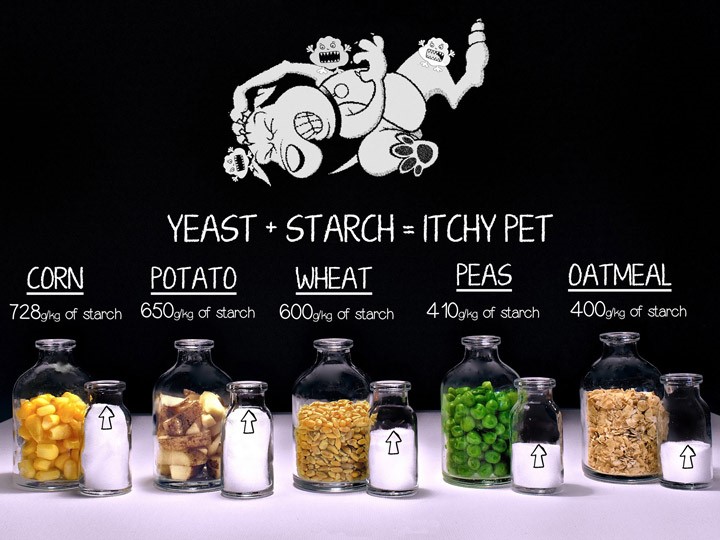|
By Rodney Habib in Nutrition And Diet
Today’s cat and dog owners are becoming more savvy than just a few years ago. They’re starting to pay attention to food labels because they want the best for their animals. So they read the labels and they choose foods that they believe will give their pet a long and healthy life. A recent trend is the move toward grain-free foods. By tracking retail pet food sales, GfK reports that grain-free dog foods saw a 28% spike in 2013. “We see the growth of grain-free foods – and natural pet products generally – as part of a larger trend toward humanization of pets,” said Maria Lange, senior product manager of GfK’s Retail and Technology team. “Consumers are clearly comfortable splurging on pets they see as valued family members, not just everyday animals.” And that’s where it all goes wrong… Pet food companies are recognizing our desire to move away from harmful grains. And why wouldn’t we? An overwhelming percentage of dogs suffer from yeast and skin disease. “Grains and other starches have a negative impact on gut health, creating insulin resistance and inflammation” says holistic veterinarian, Dr Jodie Gruenstern. “It’s estimated that up to 80% of the immune system resides within the gastrointestinal system; building a healthy gut supports a more appropriate immune response. The importance of choosing fresh proteins and healthy fats over processed, starchy diets (such as kibble) can’t be overemphasized.” Yeast is a fungus that’s always present on pets as part of the normal flora of the body, both internally and externally. When the immune system becomes depressed, or when the dog is fed starchy foods, the yeast will proliferate in the hair follicles and throughout the body. So pet owners with itchy pets want to keep them off harmful steroids and are rightfully looking at their pet’s food as a potential cause. Pet owners now know that grains feed yeast, and with the explosion of itchy pets these days, pet food companies are making a lot of money by selling them grain-free foods. But here’s the kicker: yeast and allergy symptoms aren’t caused by grains, they’re caused by starches. Starches are complex carbohydrates that turn into sugar when metabolized in the body. Do you know what yeast loves to eat? Sugar! Starches are found not only in rice, corn and wheat, but in potatoes, peas, sweet potatoes – all of those ingredients found in grain-free goods. You see, there’s one really big problem with kibble: they can’t make it without starch. That starch is not only cheap to source, but it’s necessary to hold the kibble together. Without starch, your bag of grain-free dog food would be a bag of dust. So pet food manufacturers can call those foods whatever they want – but those grain-free foods, expensive veterinary allergy foods and super premium foods all have one common denominator: lots of starch! So how much starch is in your pet’s diet? Check out that chart at the top of the page – we made it to help you understand what could be fuelling your dog’s itchy skin. (source: Borggreve et al; Murray et al.) FYI: Rice didn’t make the chart as it has the highest levels at 810g/kg. We just figured everyone knows rice is the starchiest of all… right?
0 Comments
|
Blog CreatorMary DeRoche Archives
April 2024
Categories
All
|
DISCLAIMER: I, Mary DeRoche, am not a veterinarian and do not practice medicine. I do not diagnose, cure, heal, treat disease or otherwise prescribe medication. I assist people in working with their animals in correcting energetic imbalances in their pet’s bio-field that assists the body to release its innate healing ability. When the energy chi of the body is balanced and moving correctly, the body’s innate natural energy heals itself. All healing is self-healing. Animals are affected by their environment so I also include the pet parents in my work. Animals do pick up energy from their family and environment. I only recommend the use of therapeutic grade essential oils for your pets because therapeutic grade essential oils have been tested to guarantee that they are free of synthetics, additives, toxins and any other impurities, which can result in side effects and/or inconsistent results. Essential oils and supplements are recommendations to help boost the pet’s immune system.
I recommend that clients continue to see their pet’s regular veterinarian and follow their advice and my work is a complement to regular allopathic medicine. My spiritual energy work is not a substitute for conventional medical diagnosis or treatment for any medical or psychological condition. For such issues, you should seek the proper licensed veterinarian. I am a Healing Touch for Animals Practitioner and a Subtle Energy Practitioner and my work is spiritually and energetically based and I believe all healing is spiritual in nature. I do not make any promises, warranties or guarantees about results of my work, or of the energy sessions. The energy sessions help many animals but like any energy work, it might not work for everyone. The use of essential oils, herbs and supplements is to assist the pet with balancing chakra centers for proper energy flow or chi.
© 2013~2023 Pawsitive Wellness Center All Rights Reserved.
I recommend that clients continue to see their pet’s regular veterinarian and follow their advice and my work is a complement to regular allopathic medicine. My spiritual energy work is not a substitute for conventional medical diagnosis or treatment for any medical or psychological condition. For such issues, you should seek the proper licensed veterinarian. I am a Healing Touch for Animals Practitioner and a Subtle Energy Practitioner and my work is spiritually and energetically based and I believe all healing is spiritual in nature. I do not make any promises, warranties or guarantees about results of my work, or of the energy sessions. The energy sessions help many animals but like any energy work, it might not work for everyone. The use of essential oils, herbs and supplements is to assist the pet with balancing chakra centers for proper energy flow or chi.
© 2013~2023 Pawsitive Wellness Center All Rights Reserved.


 RSS Feed
RSS Feed